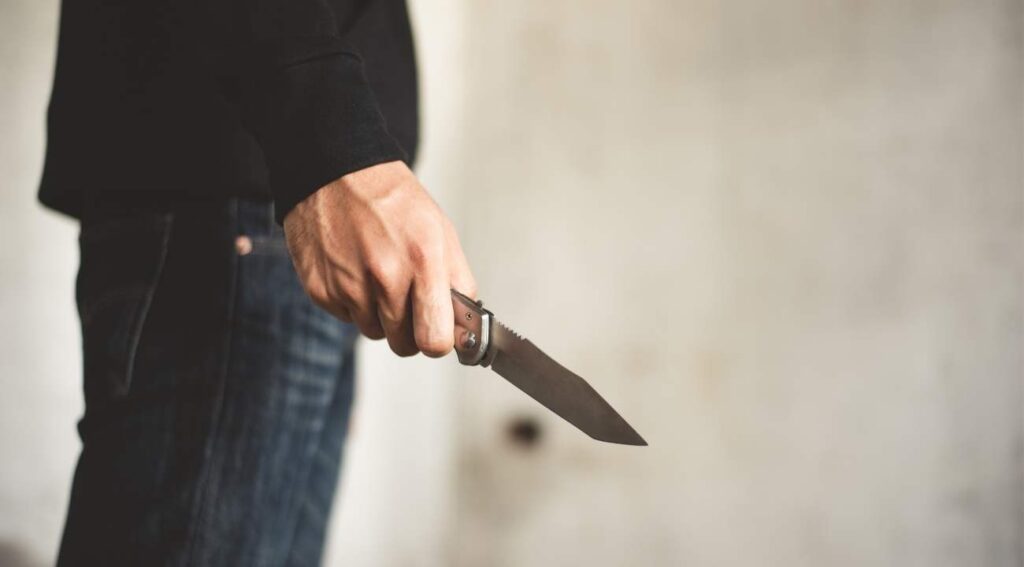People frequently discuss how to carry a knife for self-defense, but they rarely discuss how to use it properly when the situation arises. Knives have always been one of the most popular self-defense weapons.
Using a knife to defend oneself could be a terrible and gruesome experience. It’s not that easy how the Hollywood movies portray to us, a single knife wound will not render your attacker unconscious or kill them. Stopping a determined assault with a knife will almost require stabbing and cutting them repeatedly. However, there is a lot you need to know if you want to successfully defend yourself with a knife.
Why Use A Knife For Self Defense?
Many people struggle with whether they should get a gun or a knife for self-defense. Well, in many cases, a gun could be a liability, and unlike a gun, a knife is effective at all ranges. You don’t need a special license to carry a self-defense knife. Moreover, a gun is more likely to result in death leading to legal issues even when used in self-defense.
A self-defense knife is a pretty versatile kind of tool. Knives can be useful for a variety of purposes other than self-defense. Along with protecting oneself from intruders, a self-defense knife can benefit you in many ways while venturing into the wild as well. A self-defense knife is an absolutely essential item to carry when you’re exploring out in the wild.
From building a fire to hunting, a self-defense knife can come in handy in plenty of situations. While roaming around the wild, a self-defense knife can help you cut bushes or shrubs, remove painful splinters, cook in the wild, and defend yourself from wild animals.
Best Type Of Knife For Self-Defense
There are several knives on the market that are created for self-defense. More than the design, there are other crucial elements to consider while purchasing a knife, for example, a blade. The blade of a self-defense knife must have a sharp stabbing tip as well as strong cutting edges. Before you can get down to the specific blade you desire, you must first decide between a folding knife and a fixed blade.

Folding Knife
Folding knives are also known as pocket knives. The folding knives are easier to conceal, portable, and convenient to carry. You can use a folding knife for self-defense as they usually are pretty sturdy and well-built. Even for everyday use like cutting shrubs and fruits and removing staples, you can use a folding knife with ease. However, since folding knives are equipped with moving parts, they are harder to clean and maintain.
Fixed Blade
Whether it’s for self-defense or camp chores, a fixed blade can do it all. Especially if you’re going to a more outdoor location where you might have to take care of some tougher or heavy work, a fixed blade would be an ideal choice. Moreover, they are easy to handle and clean. Therefore, a fixed blade is considered the fast and most effective option in self-defense. However, they are harder to conceal and less convenient to carry.
How To Defend Yourself Using A Knife?
Holding The Knife
Whether you would be able to defend yourself with your knife against an assaulter vastly depends on how you’re holding the knife. Thus, holding your knife correctly is probably the first thing you need to learn before you start using it on someone. There are mainly two ways to hold a knife: forward grip and reverse grip.
- Forward Grip: When it comes to gripping your knife to defend yourself, keep it as simple as possible, thus forward gripping should be the way to go. When the blade reaches up on the thumb side of the hand, it is called a forward grip. A forward grip type enables you to reach further and slightly faster. To make this grip, simply grab your knife in the same general position as you would shake someone’s hand. For a firm and flexible grip, place your thumb on the knife’s spine and wrap your other four fingers beneath the handle.
- Reverse Grip: In reverse grip, the blade will face downwards. The reverse hold has two main variations: one with the knife’s edge facing outward and one with the knife’s edge facing inside. While keeping the blade downward, your thumb should curl around the knife’s handle, and your other fingers should also be securely gripping the knife handle.
- However, it does not allow for strikes to be as quick and fluid as they are with the front grip. The reverse grip is not that effective when you don’t have enough room to swing your knife.

Knife Tactics
Once you’re comfortable holding a knife, you need to get familiar with some of the self-defense knife tactics. To successfully defend yourself with a knife, you should know proper footwork, spacing, and angles of attack.
Starting with the footwork, learn how to move smoothly in and out of attack range, circle an opponent, lunge forward and backward, then perform other combat maneuvers. Keeping your knife safe from the attacker is another crucial thing.
The worst-case scenario for you is when the attacker steals your knife away from you and uses it against you. Thus keep your knife hand moving at all times, attack quickly, and stay out of range unless you’re throwing strikes.
When the attacker lunges at you, stab them directly without raising the arm and move a lot so the attacker can’t grab you. However, if the attacker grabs you from behind, try to smash the attacker’s nose and hopefully you would be released. Once you’re released, stab them in the leg or any area that’s easier for you to stab.
Using Knife Against An Armed Opponent
Whether your assailant has a weapon, and if so, what weapon he has, is a crucial issue to consider before using a knife against them. You have a better chance at fighting your attacker if he has blunt force weapons such as a bat, or knife rather than a gun. However, the distance could be a disadvantage for you if you’re up against someone who also has a knife.
Blunt-force weapons are useless in extremely close quarters where there is no room to swing the weapon at full extension. So, make sure the attacker can not close the distance and get within a couple of feet otherwise, the attacker will have the advantage.
However, fighting against someone who is armed with a knife is a gamble, there’s a huge risk of getting stabbed, probably multiple times. So, you need to act wisely.
Aiming
While aiming for a cut practically anywhere will halt most individuals and cause them to reconsider whether or not they want to continue assaulting you, there are a few spots where you can focus your strikes on stopping your attacker immediately. The spots include the triceps or biceps, inside of the forearm, wrists, and front of the thigh right above the knee.
The goal of slashing or cutting at these specific points is to sever the muscles and prevent the attacker from moving and attacking. Moreover, aiming for the spot above the knee will sever the muscles of the attacker, and make them fall to the ground.
Final Say
You may gather various techniques and ways of holding the knife as your ability and expertise improve, but for beginners, keep it as simple as possible. Overall, there are various methods and strategies for using a knife to protect yourself, but the most important thing to remember is to keep the blade pointed at the threat. So that goes everything to know about using a knife for self-defense.

William Arrovo seeks thrills and laughter in everything he comes across. He is a fun loving person with a zest of exploring the breathtaking places around the globe. He feels content in sharing his experiences of travelling to various countries. He is grateful about enriching himself with a myriad of cultures and rejuvenating his soul while staying outdoors.









Leave a Comment